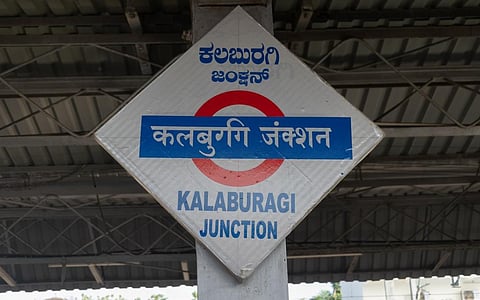

Political parties in the northern part of Karnataka, a perpetually drought-prone region, are campaigning in the ongoing Lok Sabha polls without offering any solution to farmers, even as rainfall levels have currently plummeted to the third-lowest in 122 years.
Senior leaders of the Bharatiya Janata Party (BJP), which is in power at the Centre, have patted themselves on the back for managing the drought situation in 2023.
The opposition Congress party’s leaders have, on the other hand, accused the central government of holding up drought relief funding.
On April 28, 2024, the Supreme Court passed an order directing the Centre to release drought relief funds, which it did. Both Karnataka Chief Minister S Siddaramiah and his deputy DK Shivakumar have condemned the Centre for not adhering to the plea of the state government for more funds.
Darshan Puttanniah, a young member of the legislative assembly from Malavalli in Mandya, told Down To Earth (DTE):
A new management policy has to be employed to come out of the perpetual drought conditions in arid areas. This policy can be done better outside the purview of politics by honing a different vision for water management and re-engineering the process of augmented water resources, better management and conservation of water. In the next few years, we must be able to proudly say that we have come out of this perpetual drought condition.
Puttanniah, who left a thriving career in the US and came to his home district to take up the issues of farmers in the legislative assembly, did not mince words.
A committed team of high level bureaucrats must be tasked by the government to find methods, ways and come up with a foolproof plan to revive the country’s drought-stricken regions, he said.
“It is not rocket science. Other countries have taken up such tasks and today, they are flush with conserved and managed water for agriculture, domestic and industrial applications. The group of experts should be headed by a secretary-level official accountable to the government. I have put it across the functionaries of the government, but soon I will present it more often and more vociferously in times to come on different platforms,” added Puttanniah.
The north Karnataka region is made up of ‘Kittur Karnataka’ (part of British India’s Bombay Presidency before independence) and ‘Kalyana-Karnataka’ (part of the dominions of the Nizam of Hyderabad). Both areas were added to the Wadiyar Kingdom of Mysuru during the linguistic organisation of India after independence. The result was the modern-day state of Karnataka.
As politicians trade accusations in the heat of electioneering, the harsh grip of drought has tightened across north Karnataka.
The districts of Kalaburagi (earlier known as Gulbarga), Bidar, Raichur, Yadgiri, and Ballari have endured the torment of parched lands and dwindling water supplies for four years, casting a shadow of despair over communities reliant on agriculture.
In contrast to Kalaburagi, Bidar, and Raichur, the situation has got worse in Yadgiri and Ballari. In Yadgiri, farmers are already migrating to districts in the southern and western part of the state. These include Mysuru, Uttara Kannada, Dakshina Kannada, Kodagu, Udupi and Shivamogga, all of which have good water resources.
“We do not get water to drink and maintain personal hygiene. Many of us have sold our livestock. Even our pet animals have suffered due to a lack of water,” Hanumanthappa a farmer leader from Yadgiri, told DTE.
A senior official in charge of the minor irrigation system told DTE: “In the Belagavi district, water is supplied to many villages once a week; in the Kalyana-Karnataka region, it is extended to 15 or 18 days in some villages. Water tankers are being sent to 46 villages in Belagavi, but each family is only permitted to fill eight pots.”
The Karnataka government has halted all further water allocations for agricultural purposes until the southwest monsoon arrives. Only a scant 2.75 thousand million cubic feet is allotted to chilli farmers in the upper Krishna basin districts. Chilli farmers have subsequently been left in abject poverty due to drought conditions.
On April 29, 2024, the Supreme Court bore witness to the solemn plea of the Karnataka government, as it stood before the apex court in pursuit of drought relief funds from the Centre.
The court demanded the submission of the meticulously compiled report by the Inter-Ministerial Central Team, dispatched to assess the harrowing extent of the drought’s grip on Karnataka’s afflicted districts.
In a dramatic twist, revelations emerged during the proceedings regarding the paltry relief measures enacted by the Centre. A mere Rs 3,454 crore trickled forth from the coffers, a stark contrast to the towering Rs 18,171.44 crore sought by the embattled state. This sum was sought under the banner of the National Disaster Response Fund recommendations.
Civil society in the region has not taken kindly to the political slugfest going on between the Congress and BJP over the drought.
“Our water needs cannot be used for pushing their agendas. Lives are at stake here, not just that of humankind but also the vast animal diversity, plant diversity and the rich food-growing areas,” said Srikumar, a civic activist in Kalaburagi city.
“We have our preferences too. Though there is not a single politician or political party who thinks like us and takes care of our needs, we can change them through our voting,” Srikumar added.
Opinions are being aired in hushed tones even in universities, colleges and resident associations that things cannot remain the same for the north Karnataka region, while the other parts of the state are comfortable with water.
A college professor, on terms of anonymity, told DTE that political leaders are following a set pattern irrespective of their parties.
“They try to use the drought situation for their political ends. We need better people with better vision to manage our resources and get our region out of the clutches of drought,” the professor added.